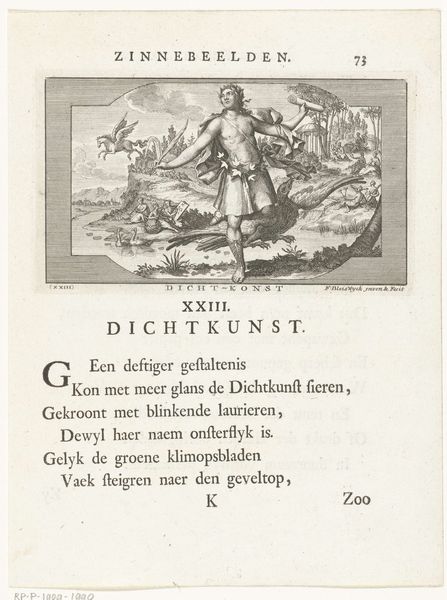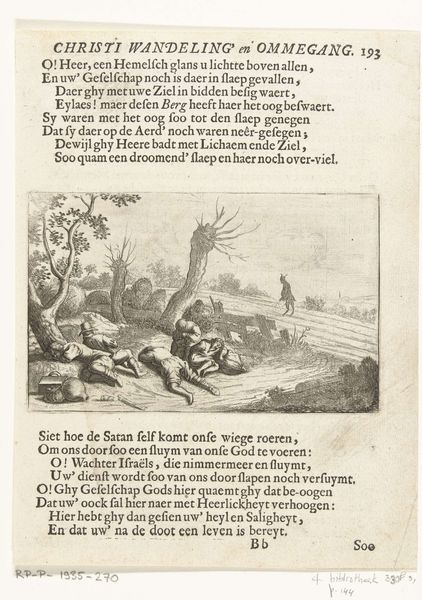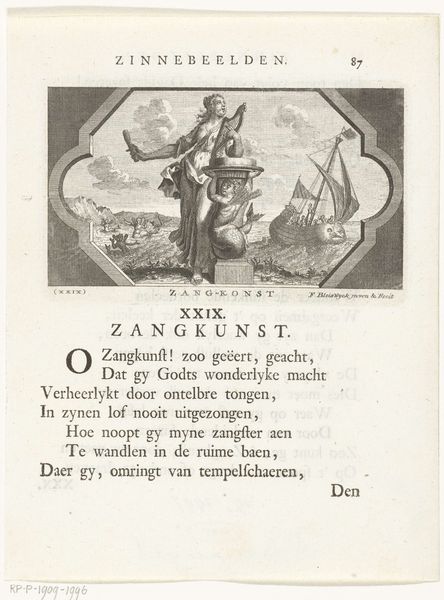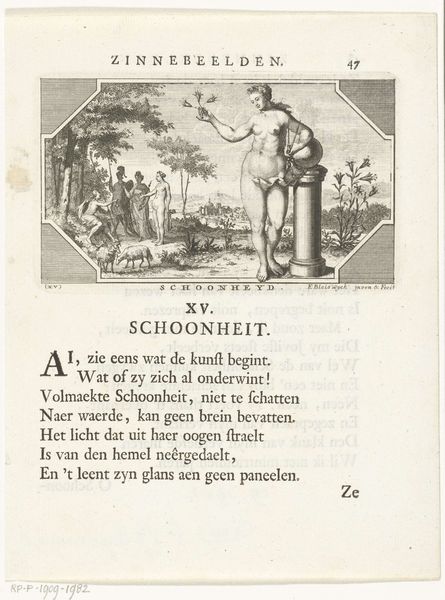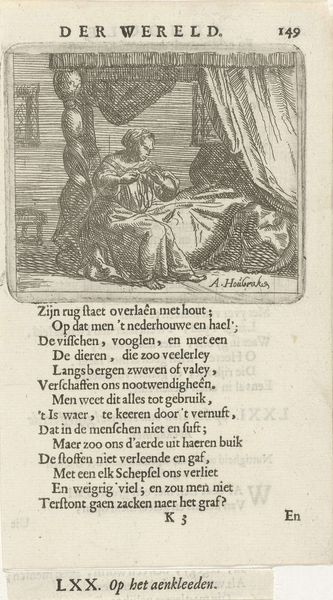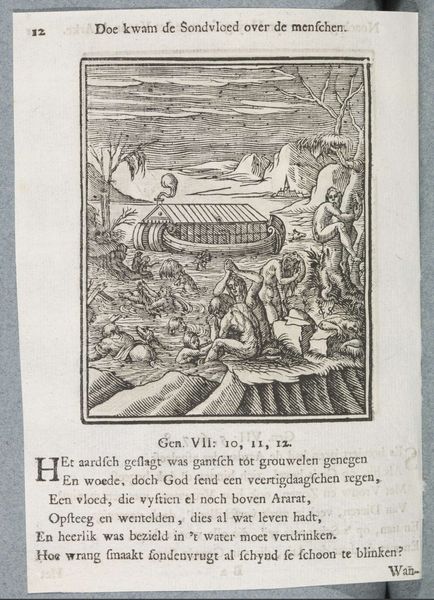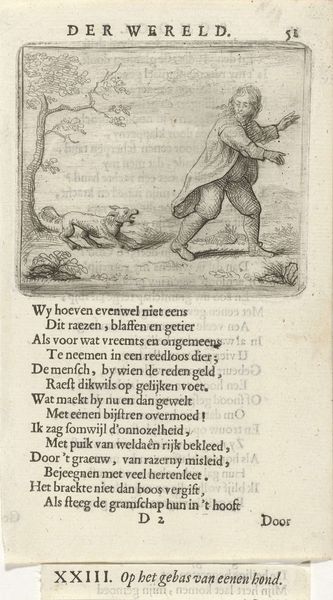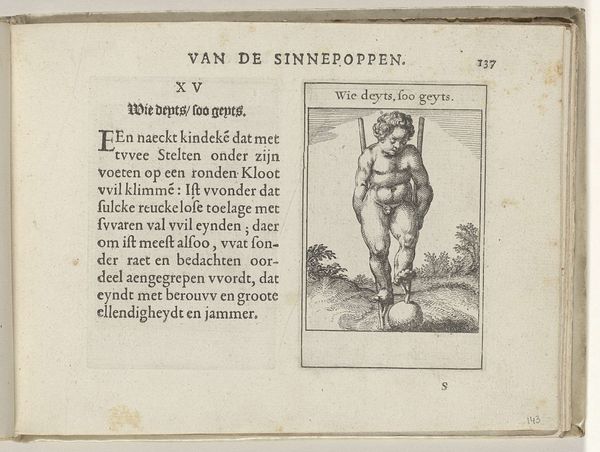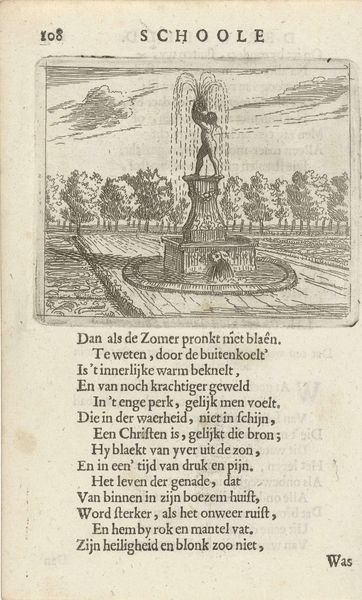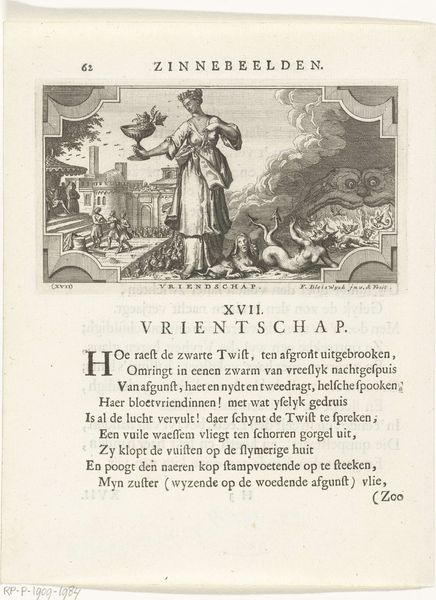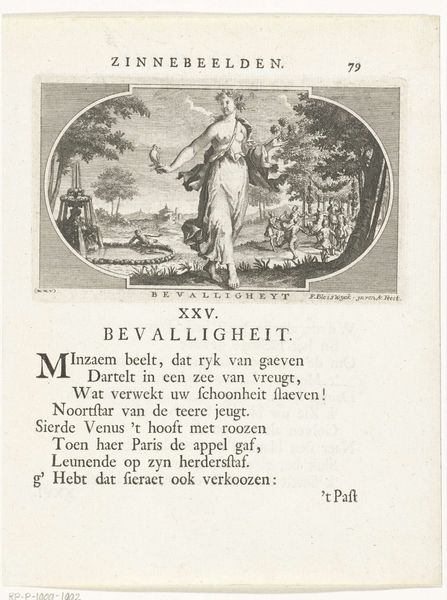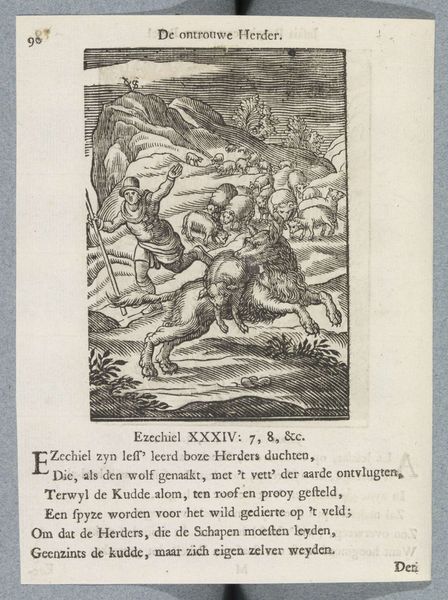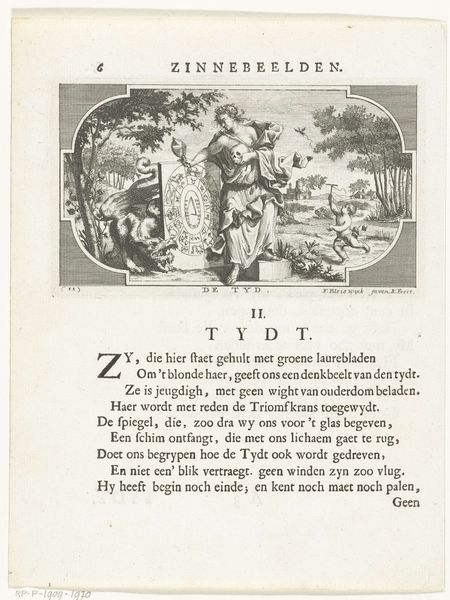
print, engraving
#
allegory
#
baroque
# print
#
figuration
#
line
#
history-painting
#
engraving
Dimensions: height 196 mm, width 150 mm, height 73 mm, width 131 mm
Copyright: Rijks Museum: Open Domain
Curator: Let's turn our attention to this print from the Rijksmuseum, "Emblem with allegory of sin" by François van Bleyswijck, created sometime between 1681 and 1737. Editor: My first impression is...uncomfortable. There's a starkness in the lines, the woman's posture seems so constrained, almost hunted. Curator: It’s definitely a loaded image. Considering the period, and the flourishing printmaking industry in the Netherlands, the proliferation of these images contributed to the shaping of public morality, of religious ideologies through easily reproducible images. We must remember the crucial social role and function of images within the Dutch Golden Age. Editor: Yes, and that the use of engraving as a medium, of affordable image reproduction. This suggests it was meant for broad circulation, attempting to control perception, possibly through visual terror and gender shaming, associating women with transgressions. The devilish-looking creature with an animal body sitting upon the Holy Scriptures emphasizes it further, and the rope that holds the figure suggests further oppression. It's unsettling to see the material and cultural power wielded like this. Curator: Precisely. The print employs fairly standard Baroque symbolism for didactic ends, but within the broader context, how were these notions produced? Bleyswijck’s artistic decisions in this context – from the model he might have selected, to the techniques of engraving itself. To whom he distributed the copies and what kind of profit was extracted, is just as interesting as any moral warning. It is impossible to simply perceive the engraving today at face value outside its societal implications. Editor: And that interplay, that tension, between its inherent artistry and its societal function is something we always need to wrestle with. The image as propaganda. The cultural biases informing production. Curator: Precisely! By studying the context around the artwork's genesis, we can unpack what messages were being disseminated and understand the values upheld. Editor: Which leaves you with an uneasiness about the purpose of art in our public and private spaces. Curator: Indeed. This work allows us to examine both the means and intentions behind an era's visual language.
Comments
No comments
Be the first to comment and join the conversation on the ultimate creative platform.
